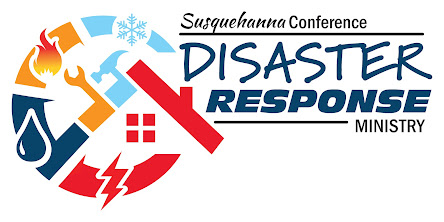Is There More to the Disaster Response Ministry?
At Annual Conference this year, I had the opportunity to speak with attendees about the Disaster Response Ministry. It was a joy to share all the opportunities the ministry has to offer. During one of those conversations, after explaining to connection to UMCOR and how we respond to “headline” disasters, I was asked whether there was more to the ministry. My reply was an emphatic “YES!”
The mission of UMCOR and the Disaster Response Ministry is to provide assistance to alleviate human suffering as the result of disaster. And, most people associate that with helping people after they have been the victims of a natural disaster, such as hurricanes, tornadoes, and flooding. While this is true in the traditional sense, human suffering can occur on so many levels in so many places. All we need to do is watch the news every evening to know our neighbors are hurting as the economy continues to slow down and inflation continues to rise. The everyday problems we face as a result are becoming problematic and these problems present an opportunity for the church to help.
In the last issue, I explained that the ministry works during “blue skies” and “gray skies.” And, part of that process involves training congregations to recognize the needs of their neighbors and doing something to meet them. The ministry does this through the Connecting Neighbors: A Disaster Ready Congregations Curriculum of the United Methodist Church program. This UMCOR developed program was created inspire congregations and communities to be better able to minimize the harm caused to people by disasters. To encourage them to respond to our neighbors’ needs in helpful, cooperative and caring ways on behalf of the church and in the spirit of Jesus Christ. And, it enables them to practically and proactively support the most vulnerable, while honoring cultural and faith values and differences within the community.
Attendees learn how to identify types of disasters likely to impact the community, assess the immediate needs of their neighbors, and identify resources the church may have to meet those needs, while connecting the church with the community.
The modules in this training focus on preparing congregants for disasters and guiding them through a process to help others. It also addresses how churches can protect its property and people before and immediately following a disaster, as well as how to appropriately use church property in disaster response. Finally, the training encourages churches to explore their capacity for various disaster response ministry opportunities and to consider ways to become engaged in, and become an integral part of the fabric and culture of the community.
What if America’s greatest asset—its faith-motivated and God-centered people—rose up to embrace the belief that protecting people, places and ministry is our responsibility? What if we saw preparation and planning to be equal partners with building projects and new fellowship halls? What if we understood that stewardship of our bodies (eating healthy foods and exercising) and stewardship of our gifts (teaching, praying, tithing) are twin pillars supporting stewardship of our church family and church home to become the best gifts we have to give to our communities when trouble comes? As one attendee described it, disaster response is about “RESPONSE-ABILITY.”
Scripture tells us to “hold unswervingly to the hope we profess, for he who promised is faithful. And let us consider how we may spur one another on toward love and good deeds” (Hebrews 10: 23-24). And, “faith is being sure of what we hope for and certain of what we do not see” (Hebrews 11: 1).
As followers of Christ, we are all called to be engaged in strengthening our communities, making them resilient, and being the hope and comfort in time of need. We are encouraged to earnestly live out our faith in ways that can transform communities—and the lives of those who are our neighbors—to alleviate suffering, including disaster response. As the visible presence of the body of Christ, the local church is well equipped to minister. And, when it gets involved, the door is opened to more ministry opportunities than the headlines will ever reveal.
Congregants and churches that are prepared to respond to their neighbors needs have an opportunity to restore hope, be a caring, Christian presence, and, share the love of Jesus to a world (and community) that is desperately searching.
For more information about the Disaster Response Ministry and the Connecting Neighbors program, contact me.
Douglas Hoy, Disaster Response Coordinator
Email: drc@susumc.org
Phone: 717-766-7441, ext. 3402
Website: www.susmb.org
Facebook: @SUSDisasterResponse
Twitter: @UMCDisasterResp
Disaster Response Ministry Blog: susdisasterresponse.blogspot.com/





.jpg)